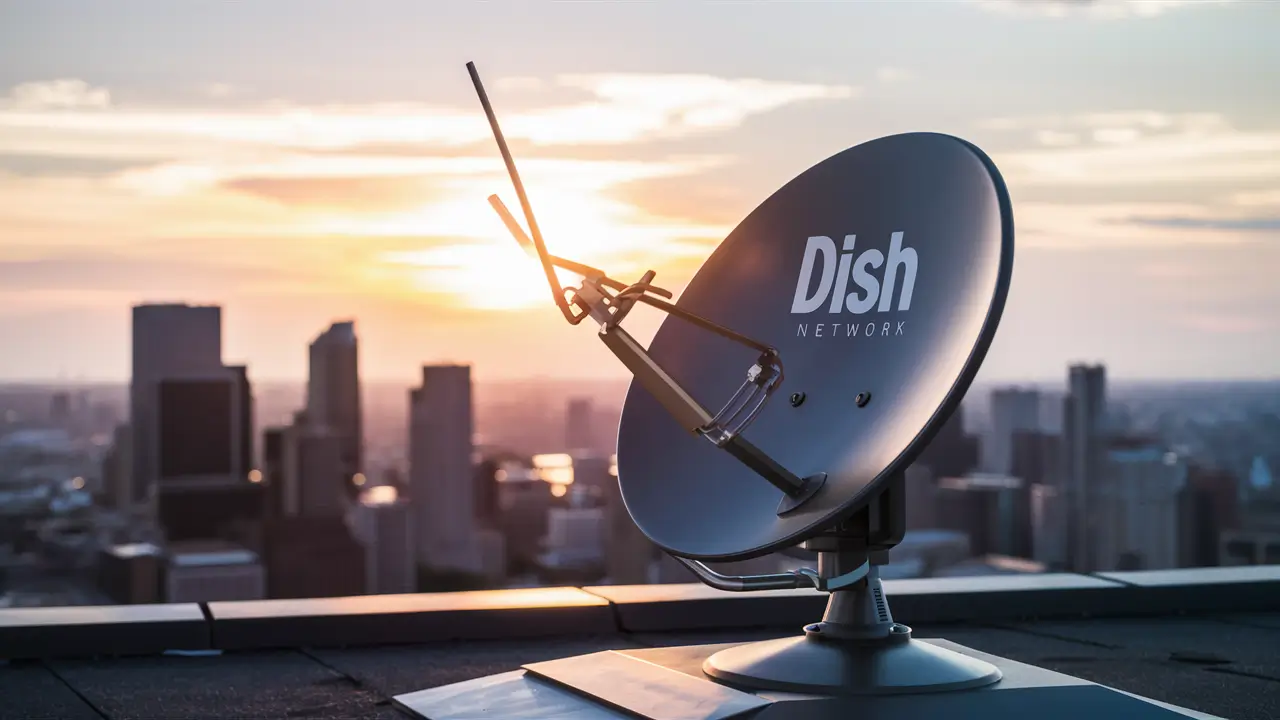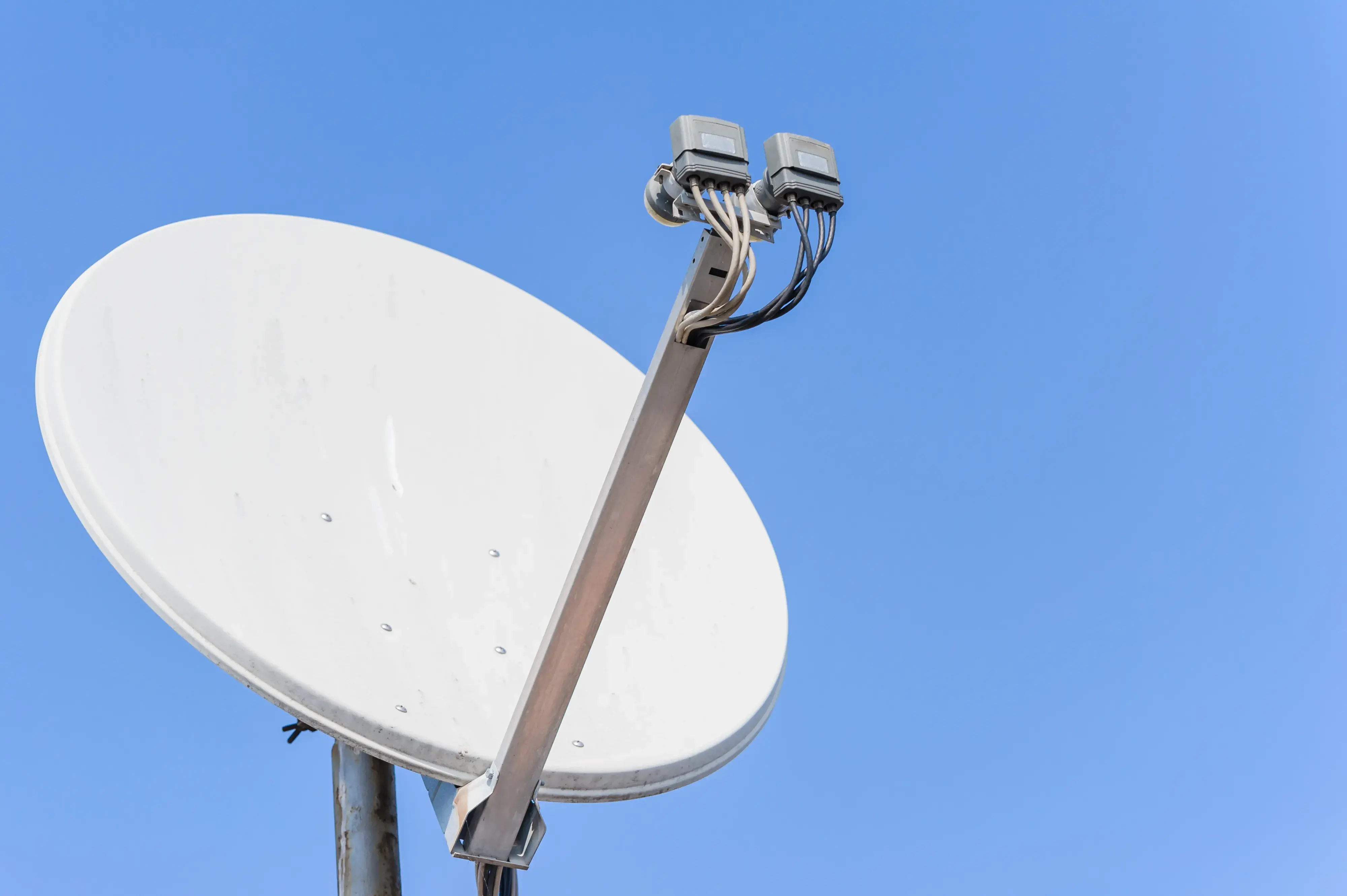
While it may seem like a daunting task to mount a satellite dish for Dish Network on your own, it is quite a simple process if one has the right tools, information, and time. The following is a step-by-step guide detailing how to point and align your Dish Network satellite dish to achieve the best signal.
What You'll Need
Before getting started, make sure you have the following equipment and tools:
- A Dish Network satellite dish: Depending on where you live and how strong of a signal you need, you will either need an 18×20-inch oval dish or a 24-inch round dish.
- A mast, pole, brackets, or stand can be fixed to mount the dish suitably.
- Coaxial cables, grounding wire, connecting cables, and splitters for connecting the dish to your receivers
- A satellite meter or signal strength reader to measure the signal from the dish
- An azimuth plot to determine the required horizontal coordinates
- The directions of the azimuth, elevation, and skew angles that Dish avails once it is activated. It may also be possible to get them from their website by keying your zip code in.
Selecting A Location
When choosing where to mount your satellite dish, try to pick:
- A place which has a direct and unobstructed view towards the south.
- A plot of land of at least 9 square meters, with a clear space of at least 3 feet distance from any other structure or plant.
- A vertical structure that can hold the dish firmly and the structure should be safe to install on like the side of the house or on the roof on a pole.
Install The Mount
Depending on the location you have chosen, fix the outdoor mount permanently according to the manufacturer’s guidelines to be able to effectively support the satellite dish. With a pole, roof mount, or wall bracket, ensure that it is adjustable and has the correct height and stability.
Position The Mast Pole
Park your mast pole upright into the mounting hole so it is in a position for the arm and for the actual dish. Position the pole perpendicularly to the ground by utilizing the levels and bolts available on the mount base. Getting this preliminary alignment right is important for adjustments to be made with finer granularity in the future.
Attach The LNB Arm
Screw the LNB arm tightly over the top end of the mast pole in such a way that it can swivel and turn during the alignment. The arm can be rotated to change the skew angle and the mast pole can be adjusted for height.
Attach The Satellite Dish
Finally, and with equal care, fit the satellite dish itself on the end of the LNB arm and tighten the bolts appropriately into place using the hardware. Make sure that no cables are twisted, and that the opening of the dish is pointed to the south where it is free from any obstructions.
Run Cable To Power
Next, connect the coaxial cable that comes from the LNB arm and install it along the mount safely down to your satellite receiver. Secure the cord with cable ties wherever needed to maintain neatness in the arrangement of the cord. Plug the other end into the “Satellite In” port on the back of your receiver box to provide power to the dish itself.
Connect Grounding
To protect against electrical surges, install the grounding wire from the dish pole to the grounding system outside the house. Check with your local building code for approved methods of grounding.
Find The Necessary Angles
This requires setting your dish in the correct azimuth, elevation, and skew position to enable the reception of the signals. You can get this orientation information at Dish Network or by searching for it with your installation zip code.
Adjust The Azimuth
Ensure that the mast pole is still vertically oriented while gradually turning the complete pole left or right to obtain the optimum signal strength or the azimuth degree that applies to your region according to the satellite meter utility. These horizontal adjustments are referred to as your “azimuth angle”.
Adjust The Elevation
Unscrew it so that the mast pole can be raised or lowered up or down gradually to the correct angle of elevation based on the reading on your meter or suggested by Dish. Gradually turn the sample in a clockwise or counterclockwise manner as you look for maximum signal and cease turning once you reach the ideal angle; this is normally between 30 to 70 degrees.
Peak The Signal Strength
Gently adjust the fine-tuning bolts on both the elevation mount and LNB arm to increase the reception meter readings or observe the visual and audio signal on the test television. Fine-tune the minor position adjustments as required until the best incoming signal from the Dish Network satellite is attained.
Set The Skew Angle
In some systems, tilting the arm to the left or right slightly can also peak the signal through the LNB skew angle. Again, use the information from Dish if a specific skew angle is given or twist until your meter shows the maximum incoming signal power.
Test The Channels
Having the dish properly aimed at the correct latitude and longitude, and maximizing the signal strength, go back into the house and begin searching for channels on your Dish receiver(s). Make sure you have purchased the satellite and can get perfect pictures of all the programming in the Dish lineup before finishing up and covering your dishes for any bad weather.
Now you know the steps on how to manually point and align Dish Network satellite dish antenna like a professional. After accurate positioning based on strength meter feedback, you will be watching quality satellite television service shortly. Just remain calm, measure accurately, make changes in small portions at once, and go through the whole procedure until you get to the best working condition.
Ready to upgrade your TV experience? Call us now at (877) 471-4808 to find the perfect Dish Network plan for you! Don’t miss out on great entertainment—our team is here to help you choose the best package and get you started today.





